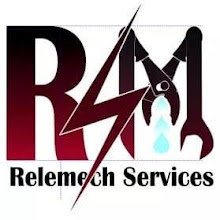What is Solar Power?
Solar power is the conversion of sunlight into electricity, either directly using photostatic (PV), or indirectly using concentrated solar power (CSP). Concentrated solar power systems use lenses or mirrors and tracking systems to focus a large area of sunlight into a small beam. Photostatic convert light into an electric current using the photo voltaic effect.
These come with their pros and cons interms of resources needed to generate a certain Electrical Power needs.
Concentrating Solar Power (CSP)
Concentrating Solar Power (CSP) technologies use mirrors to concentrate (focus) the sun's light energy and convert it into heat to create steam to drive a turbine that generates electrical power.
Photostatic Solar Power
A photostatic solar panel is a collection of receptors, typically made from silicon wafers that when exposed to light generates electricity. The electricity generated is Direct Current (DC), which is the same type of electricity that you get from a battery. This is different from the power you get fromyour wall outlets, which is Alternating Current (AC).
The sun has been used for drying clothes and growing food for thousands of years, but only recently has the sun been used for solar power.Concerns over pollution, environmental degradation, and resource depletion have led to an increasing awareness of the importance of developing solar energy.
Solar power is the conversion of sunlight into electricity, either directly using photostatic (PV), or indirectly using concentrated solar power (CSP). Concentrated solar power systems use lenses or mirrors and tracking systems to focus a large area of sunlight into a small beam. Photostatic convert light into an electric current using the photo voltaic effect.
These come with their pros and cons interms of resources needed to generate a certain Electrical Power needs.
Concentrating Solar Power (CSP)
Concentrating Solar Power (CSP) technologies use mirrors to concentrate (focus) the sun's light energy and convert it into heat to create steam to drive a turbine that generates electrical power.
 |
| A simple illustration of how this system works |
CSP technology utilizes focused sunlight. CSP plants generate electric power by using mirrors to concentrate (focus) the sun's energy and convert it into high-temperature heat. That heat is then channeled through a conventional generator. The plants consist of two parts: one that collects solar energy and converts it to heat, and another that converts the heat energy to electricity.All CSP technological approaches require large areas for solar radiation collection when used to produce electricity at commercial scale.
CSP technology utilizes three alternative technological approaches: trough systems, power tower systems, and dish/engine systems. These will be discussed and expounded in our next articles
CSP technology utilizes three alternative technological approaches: trough systems, power tower systems, and dish/engine systems. These will be discussed and expounded in our next articles
A photostatic solar panel is a collection of receptors, typically made from silicon wafers that when exposed to light generates electricity. The electricity generated is Direct Current (DC), which is the same type of electricity that you get from a battery. This is different from the power you get fromyour wall outlets, which is Alternating Current (AC).
 |
| Solar PV Panels |
PV cells are made from layers of semi-conducting material, usually silicon. When light shines on the cell it creates an electric field across the layers. The stronger the sunshine, the more electricity is produced.
The power of a PV cell is measured in kilowatts peak (kWp). That’s the rate at which it generates energy at peak performance in full direct sunlight during the summer. PV cells come in a variety of shapes and sizes.
In our upcoming articles we will discuss to details the types of Solar Power Systems, How to install the system of your choosing, Advantages and disadvantages of each systems and how you will impact your enviroment by turning to Solar Power for your energy needs.
The power of a PV cell is measured in kilowatts peak (kWp). That’s the rate at which it generates energy at peak performance in full direct sunlight during the summer. PV cells come in a variety of shapes and sizes.
In our upcoming articles we will discuss to details the types of Solar Power Systems, How to install the system of your choosing, Advantages and disadvantages of each systems and how you will impact your enviroment by turning to Solar Power for your energy needs.












